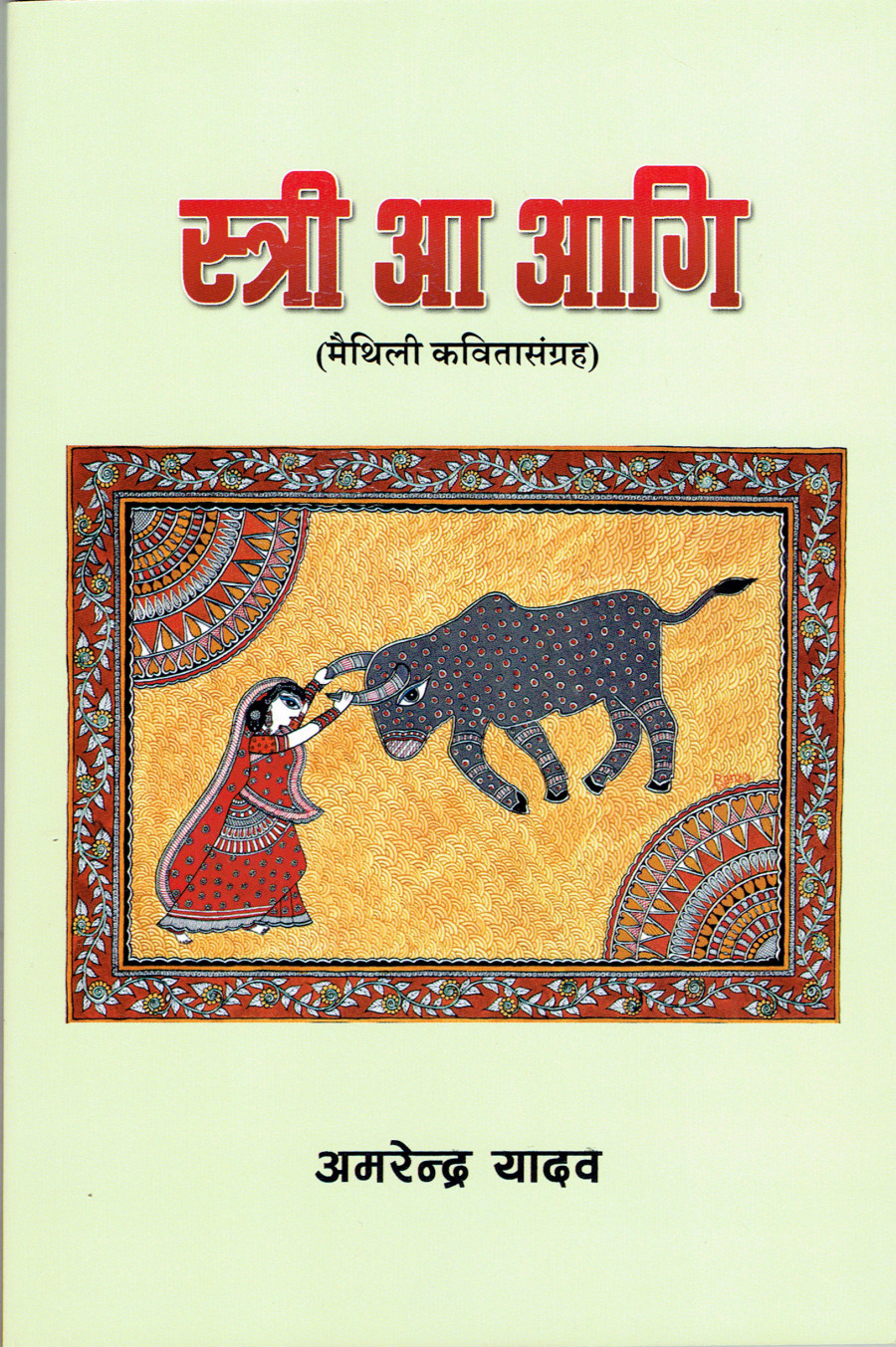Culture & Lifestyle
‘Stri aa Aaig’, a realistic portrayal of life in Nepal’s Mithila region
Amarendra Yadav’s most recent collection of poems covers a wide range of issues that are part of the everyday lives of Maithili communities from Nepal’s plains.
Nityanand Mandal
Amarendra Yadav, a well-known Maithili literary figure, has been active in Maithili literary activities for nearly two and a half decades. He has recently authored ‘Stri aa Aaig’ (Woman and Fire), a collection of poems honoured with the Nepal Bidyapati Maithili Pandulipi (manuscript) Prize 2020. The collection of forty-two poems is imbued with themes of inspection—a search for truth and a search for beauty in the apron-like flatlands of Tarai.
The title of the collection beckons to its central theme—the meaning of being a woman coupled with her exploitation and resistance. Not everyone can see the form of violence against women embedded in the timeworn cultural traditions. Madhushravani, a 15-day ritual observed by newlywed women is one such example. During the ritual, women fast throughout the day, and on the final day of the ritual, the knees of the women are burnt in a practice called ‘Temi’. Maithili women and fire face each other every now and then—when the fire in the stove heats up, when speeches turn fiery ‘hot’, when men forcibly quench their body’s ‘fire’. Poet Amarendra contemporises the medieval cruelty of the same tradition of fire and also tries to formulate its historicity.
Many also compare ‘Temi’ with the Hindu goddess Sita’s ‘Agni Pariksha’. Since Sita did not object to the ritual, the poet says that her love and loyalty toward Rama should be interrogated. He implies that Sita's surrender to Rama is the root cause of women's exploitation.
The special aspect of this collection is its love for language—its loyalty to the author’s mother tongue Maithili. Yadav’s poetry is the voice of the times that we are living in. Such an aggressive poetic expression of devotion to one's language is impossible to measure.
In the book, one can also see the poet's perspective on change and the manifestations of attraction. As such, there are some poems about love and sexual attraction. His love poems are full of village imagery in which the symbolic fragrance of the village has been carefully incorporated. The collection has a wide range of poems that will appeal to different tastes.
Another important social issue that the book tackles is class. In Mithila, what is considered to be the uniqueness of the caste is, in fact, also a class society. Poet Amarendra has successfully reflected the class society of Mithila through his poetic language.
This collection of poems explores themes of love, happiness, mania, excitement, despair, frustration, tragedy, anger, destruction, and all the colours of life. The main tone of this collection is social realism. However, some poems also indirectly draw on socialist realism. In particular, the two poems ‘Bijayk Danka’ and ‘Avatar’ describe the working-class struggle and aptly show the proletarian charm.
The main voices of this collection that permeate through the poems seem to be women, humanity that is exhausted and ailing, the tragedy of a troubled civilisation, worries of Maithili, frustrations over the oppression and indignation of women, identity-based Madhesi movement, and past fascination with rural consciousness fleeing into the city.
The collection also contains six love poems and some very personal experiential poems. The complexities and pains of ethnic bonds are found to be at the centre of love poems.
The poet seems to have shown sensitivity towards Maithili in terms of the political, cultural, and linguistic aspects of Madhes. Through his poems, he has spread awareness of the struggle against the government repression in the Madhes movement. He has also identified Khas as a high caste egoist ruler that has ruthlessly discriminated against the people of Tarai-Madhes.
The poems on the subject of poetic sensibility, mother tongue Maithili, and women are much sharper. The poet has also expressed concern and anger towards the writers and politicians attracted to Hindi from Maithili in ‘Hindi Rani’, ‘Maithili Mai’, and other poems.
In the poem ‘Hey Mahakabi’, anger and resentment are expressed against the way some people want to imprison Maithili and Vidyapati in Brahmanical narrowness and domination in linguistic conflict.
In five poems on the subject of women, various forms of exploitation of women have been expressed with sharp resentment, anger, and hatred towards the tradition. But all the poems in this collection are also composed through a contemporary lens. The poems addressed to today's human beings—the representatives of the troubled humanity and the troubled civilization trapped in the market, religions, and regime—are deeply introspective. Except for a few prose-like and general sentimental poems, almost all the poems are influential and dynamic. Ordinary love poems are elevated to another level due to their pictorial presentation.
Through this collection of poems, the poet traces his journey from adolescence to adulthood. Some of the poems also discuss global issues—from Kashmiris' uprising against the ruling Indian dispensation, the struggles of Tamilians in Sri Lanka, and the killings of 12 Nepalis in Iraq in 2004. These poems show the poet’s sensitivity to global issues. In terms of craftsmanship, the presentation of traditional images and symbols from a new perspective shows the poet's ability and uniqueness. Although there is an ideological limit to the poet, there are still a lot of prime in the collection of poems that advocate for radical change.
This collection attempts to cover the entire definition of poetry. As such, the poet has been able to present his personal and general experiences in a candid manner. In his love poems, reality and escapism are discussed. Although written by the poet during his early writing career, the poems are artistic and deeply personal.
He talks about societal struggle and duality in society—love on one side and anger on the other side. Understanding the responsibility towards the society, he points out that the structurally discriminatory policy is not only economic but also social and cultural. Through his poems, he advocates for the rights of women, Madhesi, and Maithili language rights. However, even though the ancient and traditional thought processes are strongly attacked, not all the poems seem to be progressive. In the poem ‘Gaam’, the poet praises the status quo of a traditional and undeveloped village. Similarly, in the poem ‘He Mahakavi’, Yadav commends the poetic contribution of Maithili poet Vidyapati, who is regarded by many as a regressive literary figure.
Except for a few proses, the majority of them in the book are influential and dynamic. Most of the poems do justice to the topics they broach.




 10.12°C Kathmandu
10.12°C Kathmandu















